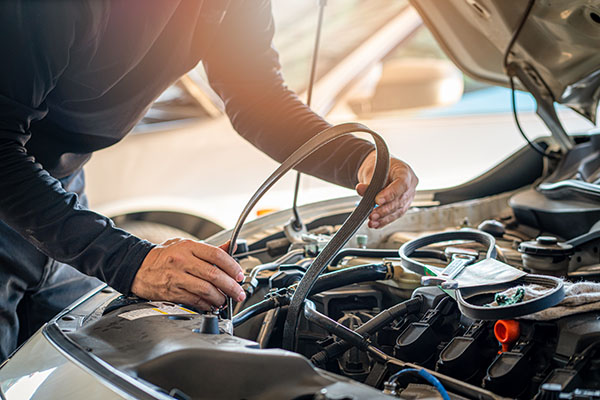
The belts in your car play a vital role in operating various components, such as the alternator, power steering pump, and air conditioning compressor.
Over time, belts can wear out, become cracked, or develop signs of damage, requiring replacement. While you can always take your car to a mechanic for belt replacement, changing them at home can be a cost-effective option if you're comfortable working on your vehicle.
Before starting this small DIY project, gather the tools you'll need for the job.
- Socket or wrench set
- Belt tensioner tool (if applicable)
- Diagram or manual for your specific vehicle
- Replacement belt(s)
Identify the belt(s)
Locate the belts in your engine compartment and determine which one(s) need to be replaced. If there is nothing there, our car is probably using a chain instead of a belt.
Release tension on the belt
Using a belt tensioner tool or a wrench, release the tension on the belt by rotating the tensioner pulley in the direction specified by your vehicle's manual. This allows you to remove the belt easily.
Remove the old belt
Once the tension is released, carefully slide the old belt off the pulleys. Take note of the routing path of the belt or refer to the diagram in your vehicle's manual.
Inspect the new belt
Before installing the new belt, inspect it for any defects, damage, or signs of wear. Ensure that the new belt is the correct size and matches the specifications recommended by your vehicle manufacturer.
Install the new belt
Begin by fitting the new belt onto the appropriate pulleys, following the routing path you noted or the diagram in your vehicle's manual. Apply steady pressure to the tensioner pulley and slide the belt onto it, ensuring it fits securely onto all the pulleys.
Check the belt tension
Once the new belt is installed, check the tension to ensure it is properly adjusted. Refer to your vehicle's manual for the recommended tension specifications. Use the belt tensioner tool or a wrench (depending on what needs to be used) to adjust the tension accordingly.
Test the new belt
Start your engine and let it run for a few minutes to ensure that the new belt operates smoothly and without any issues. Listen for any unusual noises or vibrations that may indicate a problem with the belt installation.
Belt Replacement At Complete Automotive Repair Specialists!
If this task seems too daunting to perform on your own, we don't blame you! Simply book an appointment and the team at Complete Automotive Repair Specialists will help you in no time!